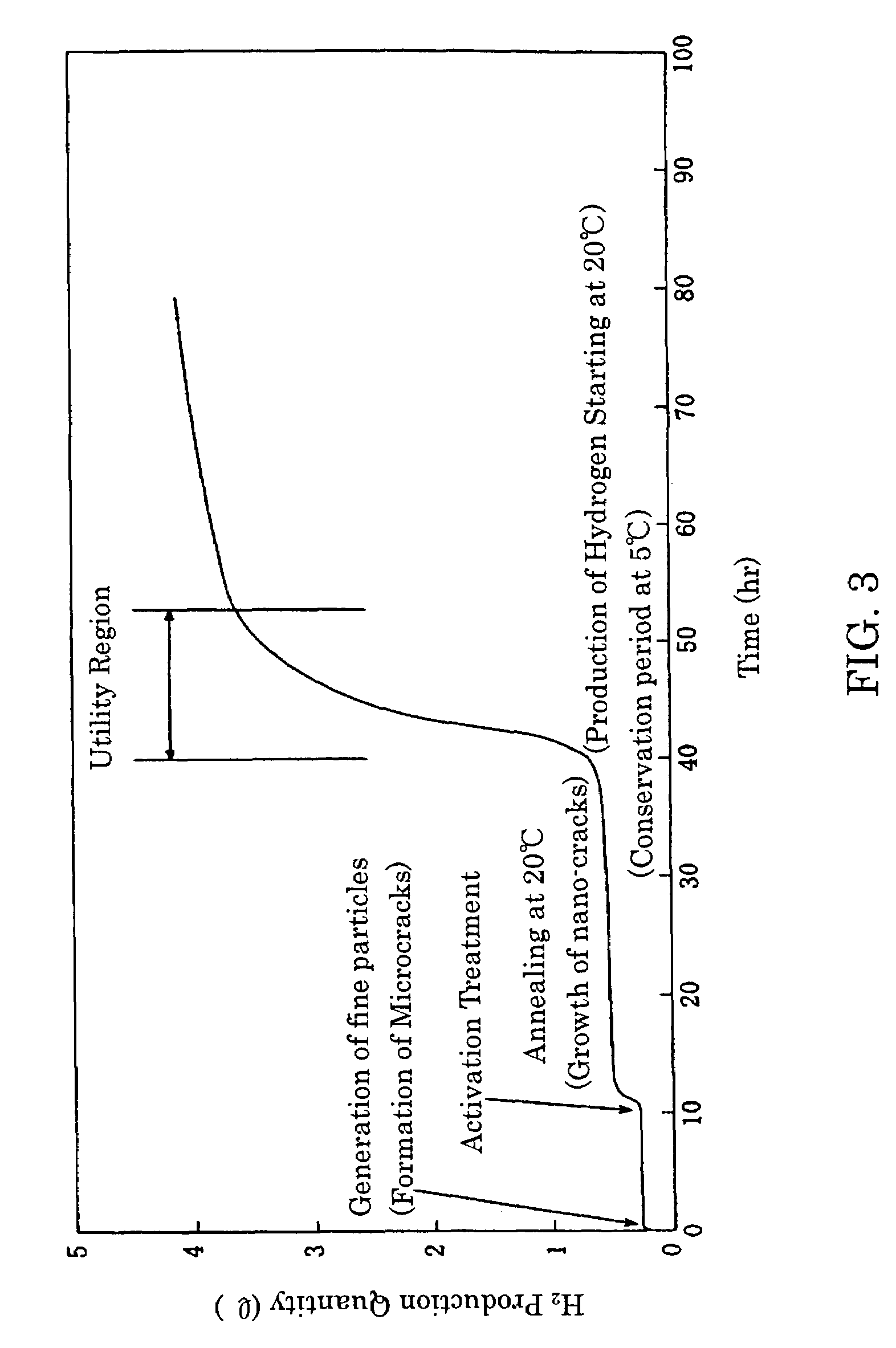Method for producing hydrogen gas utilizing mechano-corrosive reaction
a technology of hydrogen gas and mechano-corrosion, which is applied in the direction of hydrogen production, chemistry apparatus and processes, aluminum compounds, etc., can solve the problems of friction and fracture generation, and achieve the effects of low cost, simple and inexpensive production apparatus, and easy and safe production
- Summary
- Abstract
- Description
- Claims
- Application Information
AI Technical Summary
Benefits of technology
Problems solved by technology
Method used
Image
Examples
Embodiment Construction
[0020]Now, preferred embodiments of the present invention are described in detail hereinafter referring to the accompanying drawings. With an embodiment of a method of producing hydrogen gas according to the present invention, friction is produced on the surface of a solid material under water to the extent that strain up to a depth on the order of 0.1 μm from the surface is caused to occur to thereby cause minute cracks on the order of 30 μm to occur inside the solid material, so that friction energy is accumulated in surface layers of crystals, and reactions represented by the previously-described reaction formulas (3) and (4), respectively, occur, resulting in formation of a large quantity of hydrogen gas.
[0021]For the solid material, aluminum and aluminum alloy, having inherently strong reactivity against water molecules, are selected, and particularly, aluminum cutting chips (curls), which are industrial waste, are optimal for the purpose. Pure water not substantially containin...
PUM
| Property | Measurement | Unit |
|---|---|---|
| grain size | aaaaa | aaaaa |
| temperature | aaaaa | aaaaa |
| grain size | aaaaa | aaaaa |
Abstract
Description
Claims
Application Information
 Login to View More
Login to View More - R&D
- Intellectual Property
- Life Sciences
- Materials
- Tech Scout
- Unparalleled Data Quality
- Higher Quality Content
- 60% Fewer Hallucinations
Browse by: Latest US Patents, China's latest patents, Technical Efficacy Thesaurus, Application Domain, Technology Topic, Popular Technical Reports.
© 2025 PatSnap. All rights reserved.Legal|Privacy policy|Modern Slavery Act Transparency Statement|Sitemap|About US| Contact US: help@patsnap.com



